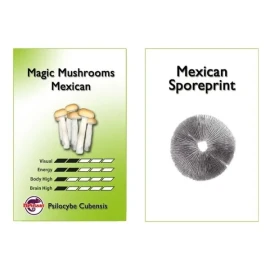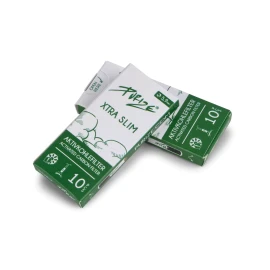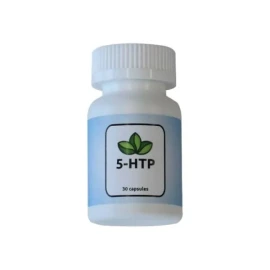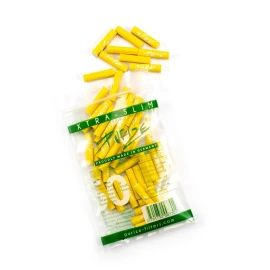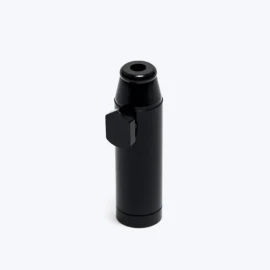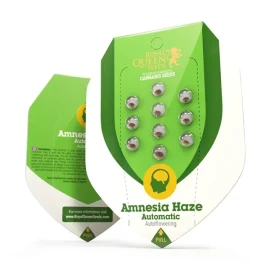Mexican Sporeprint
20,00 €
What is a Mexican Sporeprint?
A Mexican sporeprint represents a fascinating intersection of mycological science and cultural history. In simplest terms, a sporeprint consists of spores deposited from a mature mushroom cap onto a sterile surface, creating a mirror image of the gill structure beneath. When we refer to “Mexican” sporeprints, we’re typically discussing specimens from either Psilocybe mexicana, the historically significant native species, or Psilocybe cubensis strains with Mexican origins, such as the popular Mexican Dutch King variety.
These sporeprints serve multiple purposes in scientific research, including taxonomic identification, microscopy studies, and genetic research where legally permitted. Importantly, spores themselves contain no psilocybin compounds—the psychoactive substances are found only in mature fruiting bodies. However, legal status varies significantly by region, making it essential to understand local regulations before acquiring or working with any sporeprint material.
The primary applications for Mexican sporeprints include morphological identification through spore color and microscopic examination, educational microscopy projects, reference collection building, and approved research initiatives. These tools provide valuable insights into fungal biology and contribute to our understanding of Psilocybe taxonomy and genetics.
Fast Facts & Quick Guide
| Species Classification: | Primarily Psilocybe mexicana (native species) or Psilocybe cubensis “Mexican” strains including Mexican Dutch King |
| Sporeprint Color: | Purplish-brown to dark brown for cubensis varieties; variable coloration for true mexicana specimens |
| Primary Research Uses: | Microscopy examination, species identification, taxonomic studies, approved genetic research |
| Psychoactive Content in Spores: | None present—compounds only found in mature fruiting bodies |
| Storage Longevity: | Several months to years when properly dried and stored in controlled conditions |
| Legal Considerations: | Region-dependent regulations—spores often legal for research while cultivation restrictions vary |
| Typical Applications: | Educational microscopy, reference collections, morphological studies, approved laboratory research |
| Identification Value: | Spore color and microscopic characteristics essential for species verification |
| Collection Requirements: | Sterile technique, proper documentation, appropriate storage conditions |
| Research Significance: | Important for understanding Psilocybe diversity, genetics, and evolutionary relationships |
Understanding Sporeprints — Biology & Practical Value
What Spores Represent
Spores function as single-cell reproductive units carrying genetic material essential for species continuation. Unlike fruiting bodies, spores represent the dispersal stage of the fungal lifecycle, designed to travel and establish new colonies under favorable conditions. Each spore contains the complete genetic blueprint necessary for developing into a new organism, making them invaluable for scientific study.
Sporeprint Formation Process
Sporeprints form naturally as mature mushroom caps release millions of spores from their gill surfaces. This process occurs when spores are ejected from specialized cells called basidia, falling in a pattern that mirrors the gill arrangement underneath the cap. The resulting sporeprint provides both macroscopic information through color patterns and microscopic data through individual spore characteristics.
The relationship between spore color, morphology, and species identification makes sporeprints fundamental tools in mycological research. Different Psilocybe species produce distinctly colored sporeprints, ranging from purple-brown to nearly black, with microscopic features including size, shape, and surface ornamentation providing additional identification criteria.
Research and Educational Applications
Macroscopic Identification: Sporeprint color serves as a primary diagnostic feature for species identification, particularly when combined with cap and stem characteristics.
Microscopic Analysis: Individual spore measurements, including length-to-width ratios and surface ornamentation patterns, provide precise taxonomic data for species verification.
Genetic Research: When legally permitted, sporeprints can serve as source material for DNA extraction and genetic analysis, contributing to phylogenetic studies and population genetics research.
Educational Collections: Museums, universities, and research institutions maintain sporeprint collections for teaching purposes and comparative studies.
Reference Standards: Well-documented sporeprints serve as type specimens and reference materials for future identification work and taxonomic research.
Morphological Studies: Detailed examination of spore characteristics contributes to understanding evolutionary relationships and species boundaries within Psilocybe genera.
Taxonomy & Strain Differences: Psilocybe mexicana vs. Mexican Psilocybe cubensis
Understanding the distinction between true Psilocybe mexicana and commercial Psilocybe cubensis strains labeled as “Mexican” requires careful examination of taxonomic, morphological, and cultural factors. These represent distinct species with different characteristics, despite sharing geographic origins and similar names in commercial contexts.
Comparative Analysis
Taxonomic Status
- Psilocybe mexicana: Distinct species with unique genetic profile and morphological characteristics
- Psilocybe cubensis “Mexican”: Commercial strain designation within the cubensis species complex
Morphological Characteristics
- P. mexicana typically produces smaller fruiting bodies with distinctive caramel-colored caps and develops characteristic sclerotia structures
- P. cubensis Mexican strains display the typical cubensis morphology with larger caps, thicker stems, and more robust overall structure
Sporeprint Features
- P. mexicana sporeprints often show more variable coloration with sometimes lighter purple-brown tones
- P. cubensis Mexican strains produce the characteristic dark purple-brown sporeprints typical of the cubensis species
Microscopic Spore Characteristics
- P. mexicana spores tend to be slightly smaller with distinctive elliptical shapes and specific ornamentation patterns
- P. cubensis Mexican spores conform to standard cubensis measurements and morphological features
Geographic and Cultural Context
- P. mexicana holds profound historical significance in indigenous Mesoamerican traditions and continues to be culturally important
- P. cubensis Mexican strains represent commercial varieties developed from specimens with Mexican geographic origins
Research Applications
- P. mexicana research often focuses on sclerotia formation, traditional ethnobotanical applications, and genetic diversity studies
- P. cubensis Mexican strains commonly used in comparative morphology studies and cultivation research where legally permitted
Historical and Cultural Significance
Psilocybe mexicana carries exceptional importance in indigenous Mexican traditions, where it has been used ceremonially for centuries. Archaeological evidence and historical accounts document its role in pre-Columbian rituals and spiritual practices. The species produces unique sclerotia formations, sometimes called “philosopher’s stones,” which concentrate psychoactive compounds and can remain dormant for extended periods.
Commercial Psilocybe cubensis strains labeled as “Mexican” typically derive from specimens collected in Mexico but belong to the globally distributed cubensis species. These strains have been developed through selective breeding and isolation techniques, often emphasizing characteristics like spore production, growth patterns, or morphological features suitable for research applications.
How to Make, Handle & Store a Mexican Sporeprint — Step-by-Step
Creating high-quality sporeprints requires careful attention to sterile technique, proper timing, and appropriate documentation. This process demands patience and precision to ensure scientifically valuable results while maintaining safety standards and legal compliance.
Preparation Phase
Workspace Sterilization: Begin by thoroughly cleaning your work area with isopropyl alcohol and establishing a sterile field. Gather essential materials including sterile glass slides or white paper, sterilized scalpel or blade, lighter for flame sterilization, disposable gloves, face mask, and clean containers for covering specimens.
Specimen Selection: Choose mature mushroom caps that have fully opened and begun natural spore release. Look for caps with separated gill edges and visible spore deposits on surrounding surfaces. Avoid specimens showing signs of decay, contamination, or premature harvesting.
Creating the Sporeprint
Cap Preparation: Using a sterilized blade, carefully remove the stem flush with the cap bottom, ensuring clean cuts that don’t damage gill structures. Handle the cap minimally to avoid disturbing spore-bearing surfaces.
Positioning and Coverage: Place the cap gill-side down on your sterile surface, ensuring complete contact without pressing or forcing. Cover with a clean glass or container to prevent air currents from dispersing spores while allowing adequate ventilation.
Timing Considerations: Allow 6-24 hours for complete spore deposition, with timing varying based on species, environmental conditions, and cap maturity. Monitor progress periodically without disturbing the setup.
Collection and Documentation
Print Evaluation: Carefully lift the cap to reveal the sporeprint pattern. High-quality prints show clear gill impressions with dense, even spore coverage. Document the color, pattern density, and any notable characteristics immediately.
Photography and Records: Photograph the fresh sporeprint under consistent lighting conditions, including scale references and identifying information. Record collection date, specimen source, environmental conditions, and any relevant observations.
Sample Transfer: For microscopy applications, carefully transfer spore samples to glass slides using sterile techniques. Create both dry mounts for long-term storage and wet mounts for immediate examination if conducting microscopy work.
Contamination Prevention
Sterile Technique Maintenance: Throughout the process, maintain sterile conditions by flame-sterilizing tools between uses, changing gloves when contamination risk exists, and working in areas free from excessive air movement or organic debris.
Contamination Recognition: Monitor for signs of bacterial or fungal contamination including off-colors, unusual odors, slimy textures, or fuzzy growth patterns. Discard any materials showing contamination signs immediately.
Environmental Controls: Maintain appropriate humidity levels to prevent excessive moisture accumulation while ensuring adequate spore release. Avoid areas with high organic matter concentrations or poor air quality.
Storage and Preservation
Drying Protocol: Ensure complete moisture removal by allowing prints to air-dry in controlled conditions before storage. Residual moisture can lead to degradation and contamination during storage periods.
Storage Materials: Use archival-quality materials including acid-free paper, sterile foil packets, or specialized storage envelopes. Include silica gel desiccant packets to maintain low humidity conditions.
Labeling and Organization: Create comprehensive labels including species identification, collection date, geographic origin, collector information, and storage conditions. Maintain detailed records linking physical specimens to documentation.
Long-term Storage Conditions: Store in cool, dark, dry conditions with stable temperatures between 35-45°F when possible. Avoid temperature fluctuations, direct light exposure, and high humidity environments that can degrade spore viability over time.
Quality Monitoring: Periodically inspect stored sporeprints for signs of degradation, contamination, or deterioration. Establish protocols for quality assessment and replacement of compromised specimens.
Uses in Mycology & Research
Mexican sporeprints serve diverse scientific applications ranging from basic identification work to advanced genetic research. These applications contribute significantly to our understanding of fungal biology, taxonomy, and evolutionary relationships within the Psilocybe genus.
Morphological Identification and Taxonomy: Sporeprints provide essential diagnostic features for species identification through macroscopic color characteristics and microscopic spore measurements. Researchers use standardized measurement protocols to document spore length, width, ornamentation patterns, and color variations that distinguish between closely related species.
DNA Barcoding and Genetic Analysis: When legal frameworks permit, sporeprints serve as source material for genetic extraction and analysis. These studies contribute to phylogenetic reconstructions, population genetics research, and species boundary determinations within complex taxonomic groups.
Educational and Teaching Applications: Academic institutions utilize sporeprint collections for mycology courses, providing students with hands-on experience in fungal identification techniques and microscopy skills development. These collections serve as valuable reference materials for comparative studies.
Reference Specimen Development: Research institutions maintain voucher collections of well-documented sporeprints that serve as type specimens and reference standards for future identification work. These collections support taxonomic research and provide verification materials for scientific publications.
Microscopy Training and Technique Development: Sporeprints offer excellent materials for developing microscopy skills, including proper mounting techniques, measurement protocols, and photographic documentation methods essential for mycological research.
Laboratory Best Practices
Chain of Custody Documentation: Maintain detailed records tracking specimen origins, collection circumstances, processing protocols, and storage conditions. This documentation ensures scientific reliability and supports publication standards.
Quality Control Measures: Implement standardized protocols for sporeprint evaluation, including criteria for acceptable quality, contamination assessment, and storage condition monitoring.
Collaborative Research Standards: Follow established guidelines for sharing specimens and data with other researchers, including proper attribution, documentation requirements, and ethical considerations for indigenous knowledge recognition.
Legal & Ethical Considerations
The legal landscape surrounding sporeprints varies significantly across jurisdictions, requiring careful attention to local regulations and ethical considerations. Understanding these complexities is essential for responsible research and collection activities.
Global Legal Framework
General Patterns: Most jurisdictions distinguish between spores, which typically contain no controlled substances, and fruiting bodies or cultivation activities, which may fall under different regulatory frameworks. However, some regions extend restrictions to spores based on their potential for cultivation purposes.
United States Considerations: Federal law generally permits spore possession for microscopy and research purposes, but individual states may impose additional restrictions. Several states specifically prohibit spore possession with intent to cultivate, while others maintain broader restrictions on all psilocybin-related materials.
International Variations: European countries show significant variation in spore regulations, with some permitting research use while others restrict possession entirely. Countries like the Netherlands, Portugal, and certain others maintain more permissive frameworks for research purposes, while many maintain strict prohibitions.
Regulatory Evolution: Legal frameworks continue evolving as research applications expand and therapeutic potential gains recognition. Researchers must stay current with changing regulations and obtain appropriate permissions before beginning any work with sporeprint materials.
Ethical Research Practices
Indigenous Knowledge Recognition: Respect and acknowledge the cultural significance of Psilocybe species in indigenous traditions. Avoid appropriation of traditional knowledge and ensure that research activities don’t exploit or misrepresent cultural practices.
Research Ethics Compliance: Obtain necessary institutional approvals, including IRB review when human subjects are involved and permits for collection activities when required. Follow established protocols for ethical research conduct and data sharing.
Cultural Sensitivity: Approach ethnobotanical aspects with appropriate reverence for indigenous wisdom and ongoing cultural practices. Ensure that scientific research contributes positively to understanding rather than commodifying sacred knowledge.
Responsible Disclosure: Present research findings in contexts that support scientific understanding while avoiding promotion of illegal activities or misuse of information for non-research purposes.
Compliance Recommendations
Legal Consultation: Consult local legal counsel and institutional compliance offices before beginning any sporeprint-related research activities. Legal interpretations can vary significantly, and professional guidance ensures appropriate compliance.
Documentation Standards: Maintain comprehensive documentation of all activities, including acquisition sources, research purposes, and disposal methods. This documentation supports legal compliance and research integrity.
Institutional Coordination: Work through established institutional channels for all research activities, ensuring appropriate oversight and compliance with institutional policies and legal requirements.
Cultural & Ethnobotanical Context
The cultural significance of Psilocybe mexicana extends far beyond its scientific importance, representing thousands of years of indigenous knowledge and spiritual practice in Mesoamerican cultures. Understanding this context provides essential background for respectful scientific research and appreciation of traditional ecological wisdom.
Historical Significance
Archaeological evidence and colonial-era documents reveal the profound role of Psilocybe mexicana in pre-Columbian civilizations throughout central Mexico. Indigenous communities developed sophisticated understanding of the species’ properties, including seasonal collection practices, preparation methods, and ceremonial applications that reflect deep ecological knowledge.
The Aztec term “teonanácatl,” meaning “flesh of the gods,” demonstrates the sacred status these fungi held in indigenous cosmology. Spanish colonial records, while often biased by European perspectives, document widespread traditional use and the systematic suppression of indigenous practices during the colonial period.
Traditional knowledge encompasses not only the use of fruiting bodies but also understanding of sclerotia formation and preservation. Indigenous communities developed techniques for maintaining viable sclerotia through extended periods, demonstrating sophisticated understanding of fungal biology that predates modern scientific discoveries.
Modern Scientific Recognition
The mid-20th century rediscovery of traditional Psilocybe use by ethnobotanists like R. Gordon Wasson brought international attention to these species and their cultural context. This period marked the beginning of systematic scientific study while highlighting the importance of traditional knowledge in guiding research directions.
Contemporary research increasingly recognizes the value of traditional ecological knowledge in understanding fungal biology, sustainable collection practices, and potential therapeutic applications. This recognition emphasizes the importance of collaborative approaches that respect indigenous expertise while advancing scientific understanding.
Respectful Research Approaches
Modern research with Mexican sporeprints must acknowledge and honor the cultural heritage associated with these species. This includes recognizing indigenous communities as knowledge holders rather than research subjects, ensuring that research benefits extend to traditional communities, and avoiding appropriation of sacred practices for commercial purposes.
Scientific institutions increasingly adopt protocols that require consultation with indigenous communities when working with culturally significant species. These approaches support ethical research practices while fostering collaborative relationships that benefit both scientific advancement and cultural preservation.
Troubleshooting & Visual Comparison Guide
Successful sporeprint creation requires recognizing and addressing common challenges that can compromise print quality or scientific value. Understanding these issues enables researchers to produce high-quality specimens suitable for detailed analysis.
Common Issues and Solutions
Insufficient Spore Density: Weak or sparse sporeprints often result from premature collection, inadequate timing, or environmental factors affecting spore release. Solutions include selecting more mature specimens, extending collection periods, and minimizing air movement during the printing process.
Contamination Problems: Bacterial or fungal contamination can compromise sporeprint integrity and scientific value. Prevention strategies include maintaining sterile conditions throughout the process, using appropriate storage materials, and monitoring environmental conditions that support contaminant growth.
Color Determination Difficulties: Accurate spore color assessment requires consistent lighting conditions and appropriate reference materials. Use standardized lighting, compare with known specimens, and document color under multiple lighting conditions to ensure accurate identification.
Storage Degradation: Improper storage conditions can lead to spore viability loss and specimen deterioration. Implement moisture control measures, maintain stable temperatures, and use appropriate storage materials to preserve specimen quality over extended periods.
Quality Assessment Criteria
Excellent Sporeprints: Display dense, even spore coverage with clear gill pattern impressions and accurate color representation. These specimens show no signs of contamination and provide sufficient material for multiple analytical applications.
Acceptable Sporeprints: Show adequate spore density with recognizable patterns and appropriate coloration. Minor irregularities may be present but don’t compromise identification value or research applications.
Poor Quality Specimens: Exhibit sparse spore coverage, unclear patterns, contamination signs, or significant color variation that compromises identification reliability. These specimens may require replacement or supplementation with higher-quality materials.
Diagnostic Approaches
Visual Inspection Protocols: Establish standardized criteria for evaluating sporeprint quality, including coverage density, pattern clarity, color accuracy, and contamination absence. Document findings with consistent photography and notation systems.
Microscopic Verification: Confirm spore characteristics through microscopic examination, including measurement verification, ornamentation assessment, and morphological consistency checks against established reference standards.
Comparative Analysis: Use reference collections and published standards to verify identification and assess specimen quality. Maintain access to authenticated reference materials for comparison purposes.
Frequently Asked Questions
Are sporeprints legal to possess and study?
Legal status varies significantly by jurisdiction, with most regions permitting spore possession for legitimate research and microscopy purposes while restricting cultivation activities. Spores themselves contain no controlled substances, but regulations may extend to materials with cultivation potential. Always consult local laws and institutional policies before acquiring or working with sporeprint materials.
Do spores contain psychoactive compounds?
No, spores do not contain psilocybin or other psychoactive compounds found in mature fruiting bodies. These substances develop only during the growth and maturation of the mushroom itself, not in the reproductive spores. This distinction is important for both legal and scientific understanding of these materials.
How long do sporeprints remain viable for research purposes?
Properly stored sporeprints can maintain research value for months to years, depending on storage conditions and intended applications. Morphological characteristics remain stable indefinitely when stored correctly, while genetic material may degrade over time. Optimal storage involves dry, cool, dark conditions with moisture control.
Can species identification rely solely on sporeprint characteristics?
While sporeprints provide valuable identification information, definitive species determination typically requires multiple characteristics including macroscopic features, microscopic spore details, habitat information, and sometimes genetic analysis. Sporeprints serve as one component of comprehensive identification protocols.
What microscope magnification is recommended for spore examination?
Initial examination typically begins at 400x magnification for basic measurements and morphological assessment. Higher magnifications up to 1000x with oil immersion provide detailed views of surface ornamentation and fine structural features necessary for precise identification work.
How do sporeprints compare to spore syringes for research applications?
Sporeprints excel for identification work, long-term storage, and morphological studies due to their stability and concentrated spore deposits. Spore syringes may be preferred for certain laboratory applications but are more perishable and require different handling protocols. Choice depends on specific research objectives and legal considerations.
What safety precautions are necessary when working with sporeprints?
Standard laboratory safety practices include wearing protective equipment, maintaining sterile techniques, ensuring adequate ventilation, and following institutional safety protocols. While spores themselves pose minimal direct health risks, general precautions against inhaling particulate matter and maintaining clean work environments are advisable.
How should specimens be documented for scientific validity?
Comprehensive documentation includes collection location and date, specimen characteristics, environmental conditions, photographer/collector identification, storage methods, and any relevant processing notes. Photographic documentation with scale references and consistent lighting supports scientific validity and research applications.
Further Reading & Glossary
Essential Scientific Resources
Research applications benefit from access to current scientific literature documenting Psilocybe taxonomy, genetics, and morphological characteristics. Key areas include comparative genomics studies, phylogenetic analyses, and morphological variation research that provide context for sporeprint analysis and identification work.
Ethnobotanical resources offer valuable perspectives on traditional knowledge systems and cultural contexts surrounding these species. Historical accounts and contemporary anthropological research provide essential background for understanding the broader significance of Psilocybe research beyond purely scientific applications.
Key Terminology
Sporeprint: The pattern of spores deposited when a mature mushroom cap releases spores onto a surface, creating a mirror image of the gill structure and providing diagnostic color and pattern information.
Basidiospore: The sexual spores produced by basidiomycete fungi, including Psilocybe species, characterized by specific morphological features used in taxonomic identification.
Sclerotia: Compact masses of hardened fungal tissue that serve as survival structures, particularly notable in Psilocybe mexicana where they concentrate psychoactive compounds and remain viable through adverse conditions.
Ornamentation: Microscopic surface features of spores including ridges, bumps, or other patterns that provide species-specific identification characteristics visible under high magnification.
Q-value: The length-to-width ratio of spores, calculated by dividing spore length by width, providing a standardized measurement for taxonomic comparison and identification purposes.
Lamellae: The gill structures underneath mushroom caps where spores are produced and released, creating the patterns visible in sporeprints.
Contamination: The presence of unwanted microorganisms that can compromise specimen quality, research validity, or storage stability, requiring prevention through sterile technique.
Inoculation: The process of introducing spores or other fungal material into growth media, typically restricted by legal regulations in many jurisdictions when applied to psilocybin-producing species.
Research Applications
Contemporary research directions include comparative genomics studies examining evolutionary relationships within Psilocybe species, population genetics research investigating geographic variation and dispersal patterns, and morphological studies documenting variation within and between species complexes.
Educational applications encompass undergraduate and graduate mycology instruction, public education about fungal biology and taxonomy, and training programs for identification techniques and laboratory skills development. These applications support broader scientific literacy and research capacity building.
The intersection of traditional knowledge and modern science continues generating important research questions about sustainable collection practices, conservation strategies, and ethical frameworks for research involving culturally significant species. These interdisciplinary approaches strengthen both scientific understanding and cultural preservation efforts.
Related Products
Frequently Asked Questions
Everything You Need to Know



